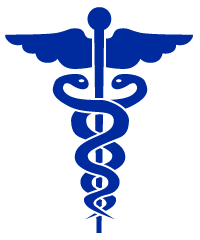 In May 2014, VA launched the Accelerating Access to Care Initiative, a nation-wide program to ensure timely access to care. As part of the Initiative, the VHA identified Veterans across the system experiencing long waits. The VA also published a 50 page report on the delays experienced by VA patients. Among the findings, they found:
In May 2014, VA launched the Accelerating Access to Care Initiative, a nation-wide program to ensure timely access to care. As part of the Initiative, the VHA identified Veterans across the system experiencing long waits. The VA also published a 50 page report on the delays experienced by VA patients. Among the findings, they found:
1. The VA scheduling system resulted in confusion among
scheduling clerks and front-line supervisors.
2. Meeting a 14-day wait-time performance target for new appointments was simply
not attainable
3. The concept of “desired date” is a scheduling practice unique to VA, and difficult
to reconcile against more accepted practices such as negotiating a specific
appointment date based on provider availability, or using a “return to clinic”
interval requested by providers.
4. . Overall, 13 percent of scheduling staff interviewed indicated they received
instruction (from supervisors or others) to enter in the “desired date” field a date
different from the date the Veteran had requested. At least one instance of such
practices was identified in 76 percent of VA facilities. In certain instances this
may be appropriate (e.g., a provider-directed date can, under VA policy, override
a date specified by a patient), but the survey did not distinguish this, nor did it
determine whether this was done through lack of understanding or malintent
unless it was clearly apparent.
5. Eight percent of scheduling staff indicated they used alternatives to the Electronic
Wait List (EWL) or Veterans Health Information Systems and Technology
Architecture (VistA) package. At least one of such instance was identified in 70
percent of facilities. As with desired date practices, we did not probe the extent
to which some of these alternatives might have been justified under VA policy.
The questionnaire employed did not isolate appropriate uses of external lists.
6. Findings indicate that in some cases, pressures were placed on schedulers to
utilize inappropriate practices in order to make waiting times (based on desired
date, and the waiting lists), appear more favorable. Such practices are
sufficiently pervasive to require VA re-examine its entire performance
management system and, in particular, whether current measures and targets for
access are realistic or sufficient.
7. Staffing challenges were identified in small CBOCs, especially where there were
small counts of providers or administrative support.






 The health care and social assistance industry gained 100 jobs from June 2014 to July 2014. Compared to July 2013, the cumulative number of jobs added in this industry is 33,300, an annual increase of 2.5%.
The health care and social assistance industry gained 100 jobs from June 2014 to July 2014. Compared to July 2013, the cumulative number of jobs added in this industry is 33,300, an annual increase of 2.5%.





 In May 2014, VA launched the
In May 2014, VA launched the